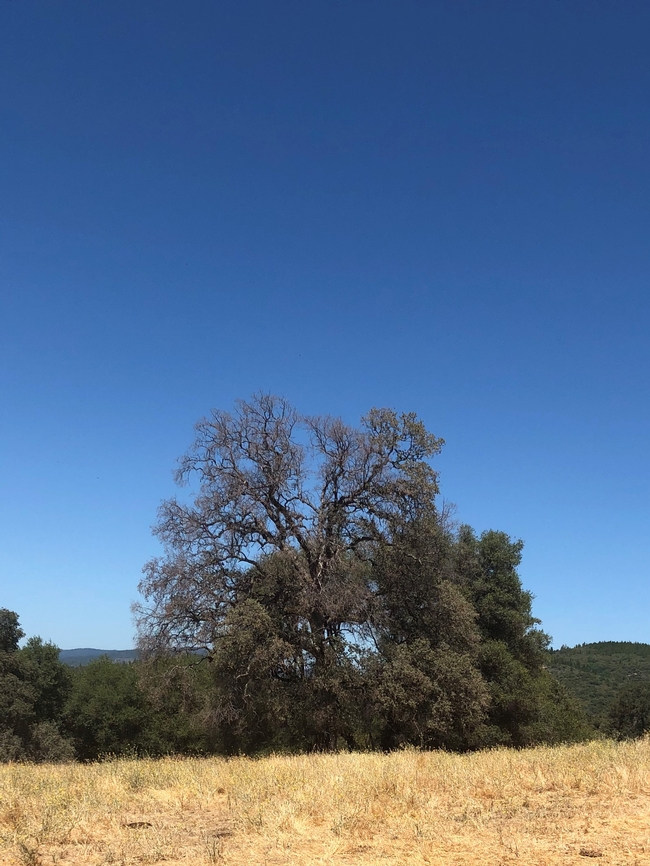In the space of several days in early June, I received phone calls from two foothill cattle producers about an unusual number of dead and dying blue oaks on their annual rangelands. The first rancher's observations were limited to his home place; the second rancher was noticing the blue oaks dying on leased grazing land from Auburn to Nevada City. In mid June, I visited one of these operations and noted several things:
- Some of the trees that the rancher said had leafed out normally in spring appeared to be entirely dead and devoid of leaves.
- Several trees appeared to be dying from the top down or on individual branches. Many of the leaves on these trees also appeared to be scorched.
- These trees did not appear to have any lesions on their trunks - no wounds or noticeable fungal growth.
Several weeks later, I published my summer newsletter and included a short blurb asking readers to contact me if they were noticing anything unusual in their blue oaks. Within an hour of sending the newsletter electronically, I had emails from several landowners noting similar conditions. The issue, it seems, is more widespread than just a couple of random trees!
While I'm no expert on the diseases of blue oaks (or any other tree, for that matter), I'm fortunate to have colleagues within the University of California who are! I contacted Dr. Matteo Garbelotto, a Cooperative Extension Specialist in Forest Pathology at UC Berkeley. Dr. Garbelotto has studied a variety of tree diseases, and he immediately suggested collecting samples from some of our foothill trees to try to figure out what is happening.
This week, Dr. Doug Schmidt from Dr. Garbelotto's Forest Pathology and Mycology Lab joined me in collecting samples. We collected leaves with evidence of scorching, soil samples from the base of infected trees, and tissue samples from the trunks at eight sites from Placer to Yuba County. The lab will test these samples over the coming weeks to try to isolate the pathogen(s) or other factors that may be causing blue oaks to die. We hope to have some preliminary answers in about six weeks.
In the meantime, you can help us understand the extent of the problem. Take note of any recently dead or currently dying blue oaks on your property. Take photos of the entire tree, a close up of the leaves, and any other unusual features. And complete our Blue Oak Mortality survey to help us build a database of impacted areas.
Contact me at dmacon@ucanr.edu if you have questions!
